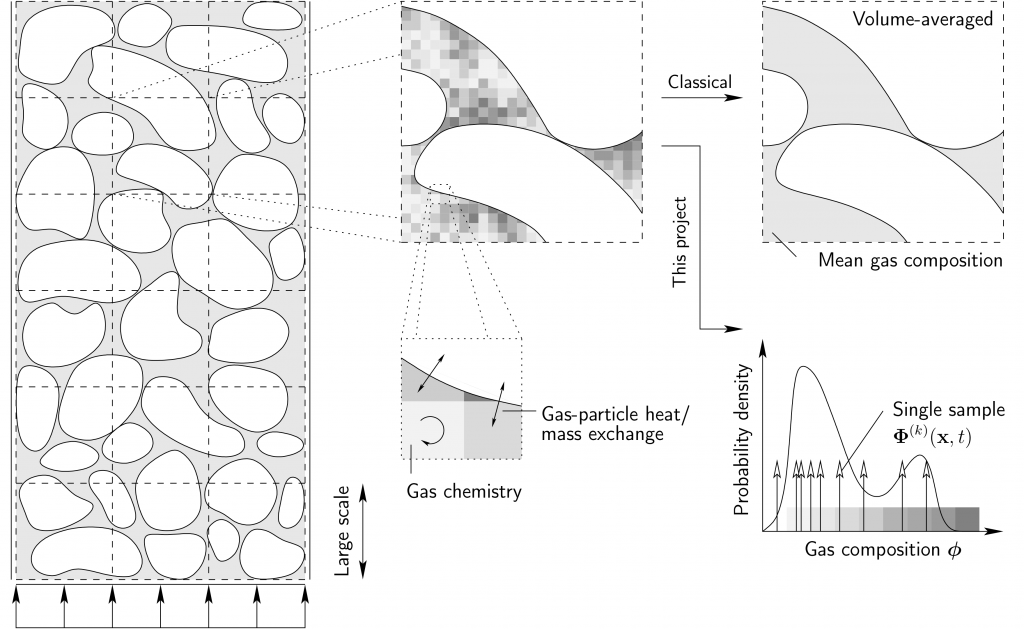A5
A probabilistic approach for incorporating small-scale gas-particle thermochemistry into DEM/CFD models of granular assemblies
Principal Investigators
Doctoral candidates / Postdocs
In reacting granular assemblies, the chemical composition and temperature of the interstitial gas frequently vary on length scales that are much smaller than the particles and that cannot be resolved in a DEM/CFD description. This small-scale heterogeneity is induced by irregular flow structures inside the intricately shaped interstitial void spaces between arbitrarily shaped and randomly packed particles and exacerbated by gas phase chemical reactions. Additionally, the material make-up and temperature of an assembly vary not only from particle to particle, but also within a particle, eliciting small-scale variability on part of the gas phase through gas-particle heat and mass exchanges. Particularly if the reaction and transfer rates are nonlinear, the influence of small-scale compositional heterogeneity of the interstitial gas on its resolved large-scale behavior is very difficult to gauge and quantify at present.
In order to address this challenge, our objective is to develop and harness a probabilistic description of the small-scale variability in the gas phase composition that permits an incorporation of realistic chemical kinetics and gas-particle heat and mass exchanges. A particular focus lies on the coupling with the DEM description of a granular assembly and the transfer of intraparticle and interparticle heterogeneity to an underresolved gas flow. Besides obviating the common assumption of small-scale homogeneity, the approach we target aids minimizing the dependency of model predictions on the chosen resolved length scale and promotes universality.
Modeling approach and work program
The small-scale heterogeneity of the gas composition within a large-scale control volume can be characterized in terms of a probability density function (PDF) for which we will formulate an evolution equation that will be coupled to the DEM particle dynamics. The evolution equation for the composition PDF will include not only the small-scale segregation effected by gas-particle thermochemistry, but also mixing due to molecular diffusion and heat conduction. The time constants at which diffusion and conduction promote homogenization and the effective diffusivities induced by small-scale transport will be calibrated based on fully resolved calculations from projects A4 and C5. In addition, the gas-particle mass and heat exchange will be described with the aid of novel transfer coefficients that vary along the particles’ surfaces and are determined in project C4. On the resolved scales, the transport equation for the composition PDF will be solved with the aid of a Eulerian stochastic solution scheme that will be generalized to unstructured grids and second order temporal accuracy, amended by adaptivity in the statistical accuracy and incorporated into the solution framework of project C7. Finally, the effectiveness of the probabilistic description will be assessed by comparison with experimental measurements and fully resolved calculations of species and temperature profiles in the configurations of projects A3, A4 and C2.

Figure 1: Inside a large scale control volume, the composition varies from one fluid element to another (center), reflecting a heterogeneity that will be statistically described (bottom right).



